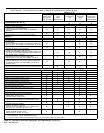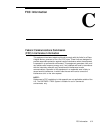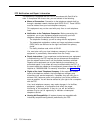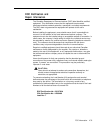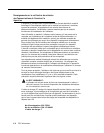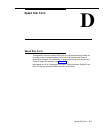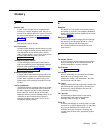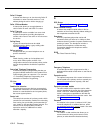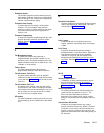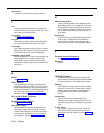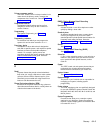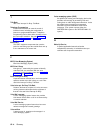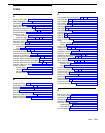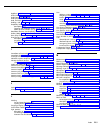
Caller ID Inspect
A feature that allows you to view incoming Caller ID
information on other lines while active on a call,
without placing the call on hold or hanging up.
Caller ID Name/Number
A feature that allows you to toggle between a
caller’s Caller ID name and Caller ID number.
Caller ID service
A subscription service available from some local
telephone companies, providing the telephone
number and/or name of the caller on lines that have
the service.
Calling Group
A group of extensions that can be called
simultaneously by dialing a group calling code.
See also Hunt Group.
Calling restriction
A feature that lets you control telephone use at
specific extensions.
Carrier
Plastic housing, made up of a backplane and
cover, which holds system modules. Your
configuration consists of at least the primary carrier
and can be expanded to include the expansion
carrier.
Centralized Telephone Programming
A method of telephone programming that lets you
program individual extensions in the system from a
system display phone at extension 10 or extension
11. Centralized Telephone Programming is an
alternative to Extension Programming.
CO Line
See Line.
Combination extension
An extension that has two devices connected to it.
Combination extensions can connect two standard
devices or a standard device and a system phone,
but not two system phones.
Control unit
The control unit consists of a primary carrier, which
contains line and extension modules for connecting
lines coming into your building to the extensions in
your system. It also provides system features. The
control unit can be expanded to include an
expansion carrier for additional line and/or
extension capacity.
D
DGC Group
See Group Call Distribution and Hunt Group.
Direct Extension Dialing
A feature that enables outside callers to dial an
extension or Hunt Group directly, without waiting for
the receptionist to transfer the call.
Doorphone
An AT&T proprietary phone that can be wall
mounted outside your office or in a lobby to allow
visitors to alert any number of system extensions by
pressing a button. The doorphone includes a
speaker and microphone, to allow two-way
conversation between the doorphone and the
phone that answers.
DXD
See Direct Extension Dialing.
E
Emergency Telephone
A standard phone that is programmed to dial a
predetermined outside number when a user lifts the
handset.
Expansion carrier
The optional component of the control unit that can
be connected to the primary carrier to expand your
system’s line and extension capacity. See also
Primary carrier.
Expansion processor module
The main module of the expansion carrier, which
must be installed in the center slot of the expansion
carrier. This AT&T module extends the primary
carrier’s management capabilities to the 206 and
400 modules installed in the expansion carrier. See
also Primary processor module.
Extension
An endpoint in the system (numbered 10–57) that
connects telephones or standard devices, which
can be dialed using the [
Intercom ] button. See also
Programming extension.
Extension jack
The location on 206 modules that allows you to
connect extension wiring to the control unit for
phones (or other telecommunications devices).
GL-2 Glossary



